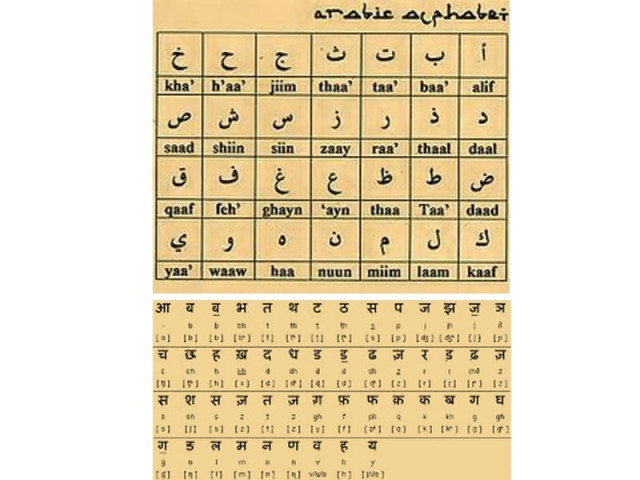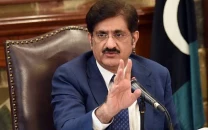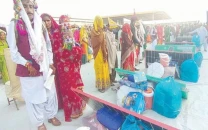Transcending barriers: Software to break down the wall within the Sindhi language
The Sindhi people are divided by Arabic and Devanagri scripts.

The Sindhi people, divided by religion and borders, also read their mother-tongue in two different scripts - Arabic and Devanagri. While Indian Sindhis do, to some extent, read the former, the present generation of Sindhis in Pakistan find Devanagri illegible.
“Not even a Sindhi language scholar has emerged in Sindh so far who is ‘au fait’ with the two scripts of the language,” writes Sindhi Language Authority (SLA) chairperson Dr Fehmida Hussain in her booklet ‘Learning the Sindhi Language’. “There is a treasure trove of literature, past and present, in both the scripts, but few Sindhis can benefit from it.”
Literature is not the only realm where the divided people face an obstruction; the Sindhis on the two sides of the Pakistan-India border also have trouble communicating with each other in writing. However, with the help of technological advancement, this barrier is likely to be circumvented before long.
Dr Virender Kalra, a lecturer from the University of Manchester, has embarked upon a one-year project of transliterating the two scripts with the help of an internet-based software. Visiting Hyderabad for two days, he met Sindhi writers, poets and SLA officials to gather their recommendations.
Meanwhile, Ali Hassan Mallah, a Jamshoro-based software manufacturer with a knack for Sindhi literature and poetry, claims to have already made a transliteration software.
Dr Virender Kalra
Having previously prepared a transliteration software for the two Punjabi scripts - Shahmukhi, with Perso-Arabic letters, and Gurmukhi, with Landa letters derived from the Indic scripts - Dr Kalra has moved on to Sindhi and its scripts. Like the earlier project, this one is also funded by the Punjabi University in Patiala, India.
“The software will transliterate one script into the other without affecting the phonology of the word,” he explained. However, the computer programme, which will be available on the Punjabi University’s website, will not help the readers of one script decipher the other.
The majority of Sindhis in India live in the states of Rajasthan, Gujarat and Maharashtra. According to Dr Kalra, while the schools in these states teach Sindhi in both scripts, most of them use Devanagri.
“Literature has a rich vein of Sindhi in the Arabic script,” said Dr Kalra. “A large number of books, newspapers, magazines and other reading materials are published in it. Indian Sindhis would benefit a lot if they were able to read these.”
For SLA secretary Taj Joyo, Dr Kalra’s undertaking is the need of the hour if Sindhis are to transcend their own language barrier.
Ali Hassan Mallah
The owner of software house Indusilicon - named after the Indus and Silicon valleys - in Jamshoro, Mallah has created websites for Sindhi Adabi Board, Brahvi Academy, Sindhica and hundreds of other organisations and universities. Although he completed his studies in mass communication and computer science from Sindh University and MUET, he has a deep interest in literature and ethnography.
Unlike Kalra’s envisaged programme, Mallah’s software, which he completed in August, can transliterate 12 scripts. These include Arabic Sindhi, Devanagri, Shahmukhi, Gurmukhi, Tamil, Gujarati, Kannada, Telgu, Malayalam, Orya, Bengali and Sirhali scripts.
“I spent about a year and a half completing this transliteration software with my own resources,” he told The Express Tribune. He plans to launch his product in mid-October, but it will not be available for free.
However, he says, he will offer any publisher free use of the software for the publication of Shah Jo Risalo, a compilation of Shah Abdul Latif Bhitai’s poetry, in any of these scripts.
Regarding the authenticity of transliteration, he says that the letters of each of the scripts have been selected from the Unicode - a global computing industry standard for the encoding, representation and handling of text expressed in the world’s writing systems.
“We have entered the age of digital linguistics,” said Mallah, predicting that his software, which he hopes to sell to Google, a media house or the government, will pave the way for the next stage of digital translation of regional languages. “A few years from now, we will need text-to-speech software for the use of regional languages in mobiles, computers and the internet.”
A history of the scripts
At the time of the compilation of the Vedas, in 1500-1200 BC, Sindhi was widely spoken in what now comprises Sindh province and some bordering areas lying within India. It evolved through Sanskrit, Pali, Prakrits and Apabhramsha scripts until the new Indo-Aryan stage in 10th century AD.
By the time Muslims arrived in Sindh in 711 AD, Sindhi was not only extensively spoken, but also written in three distinct scripts — Ardhanagri, Saindhu and Malwari, which were all variations of Devanagri. Later, absorbing Arabic and Persian words, it became a popular literary language between the 14th and 18th centuries. At different points in ancient and modern history, it also adopted Thattvi, Khudabadi, Luhaniki, Memonki, Khojiki, Gurmukhi and Hatvaniki scripts.
When the British colonialists conquered Sindh in 1843, they found a range of scripts being used by Muslim and Hindu clerics, traders, civil servants and the local communities. In the following years, a debate began among the British officers over whether to use Arabic or Devanagri scripts for official use. They finally settled for the Arabic version, tasking scholars Munshi Thanwardas and Mirza Sadiq Beg with developing the present 52-letter alphabet of the Sindhi language. Given the unmatched diversity of the phonology, more dots were added to many Arabic letters.
The Devanagri script, which evolved from the monumental Gupta script and ancient Brahmi alphabets, has been in use in India since the seventh century AD. Characterised by long, horizontal strokes at the top of the letters, this writing system is a combination of alphabets and syllabary. Written from left to right unlike the Arabic script, each Devanagri character represents a syllable.
Published in The Express Tribune, September 19th, 2014.



















COMMENTS
Comments are moderated and generally will be posted if they are on-topic and not abusive.
For more information, please see our Comments FAQ